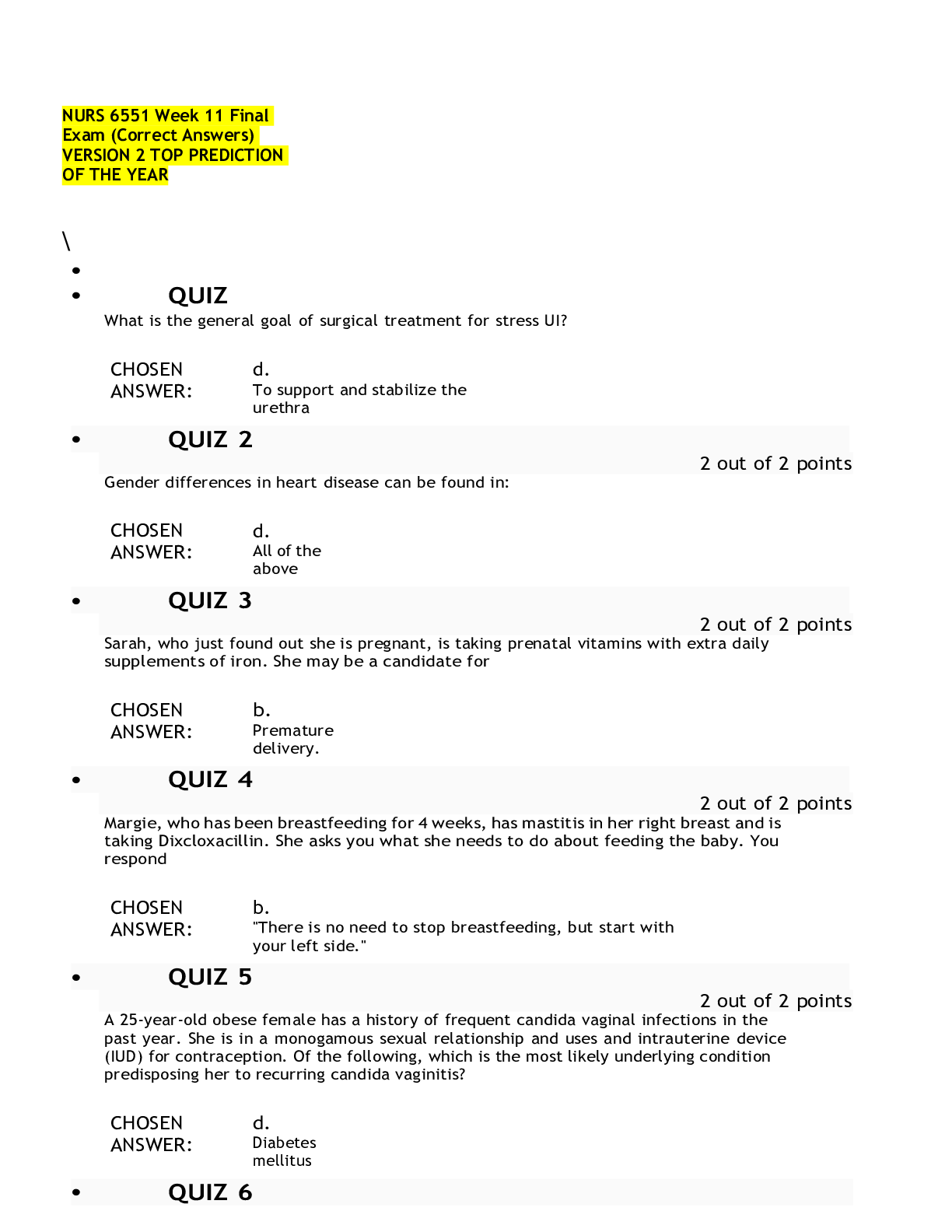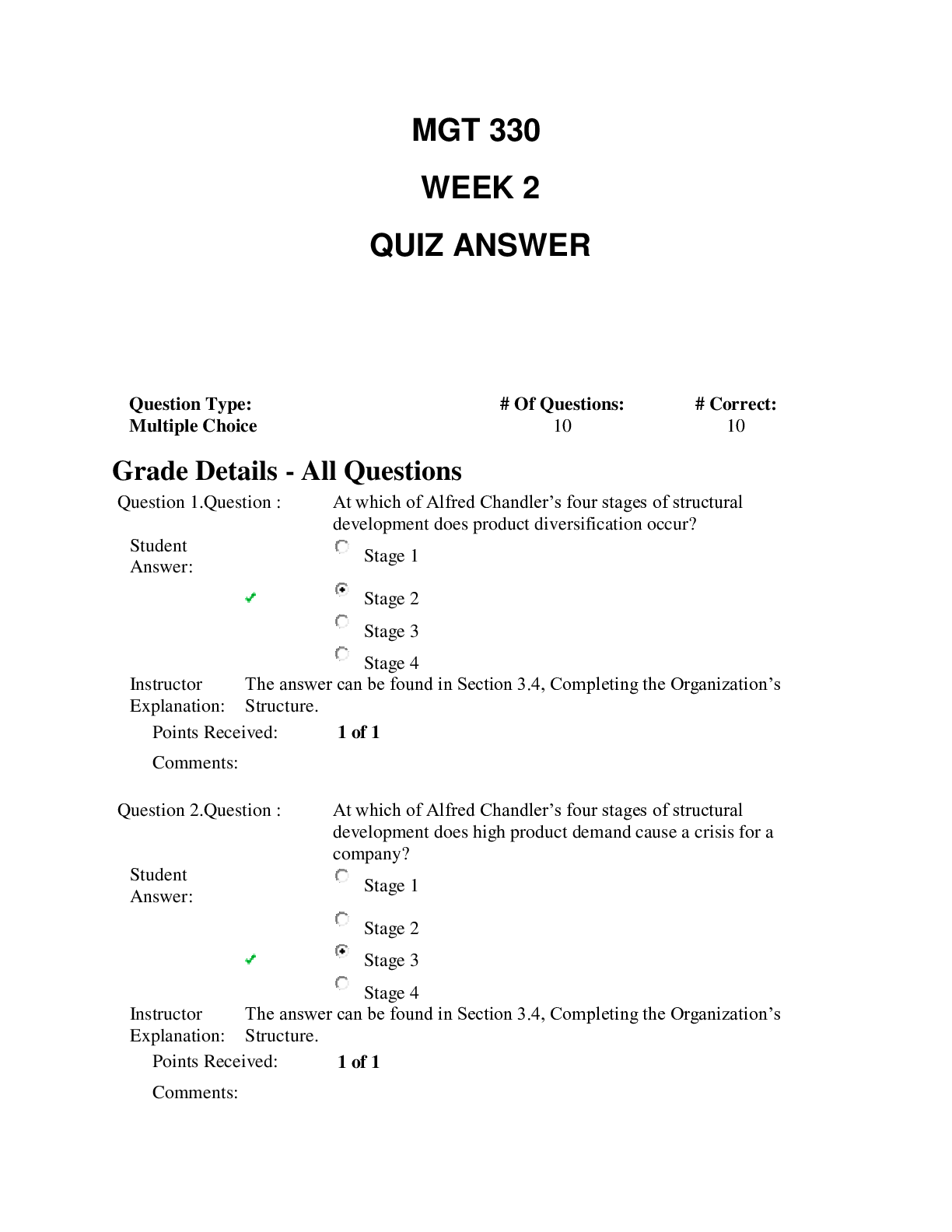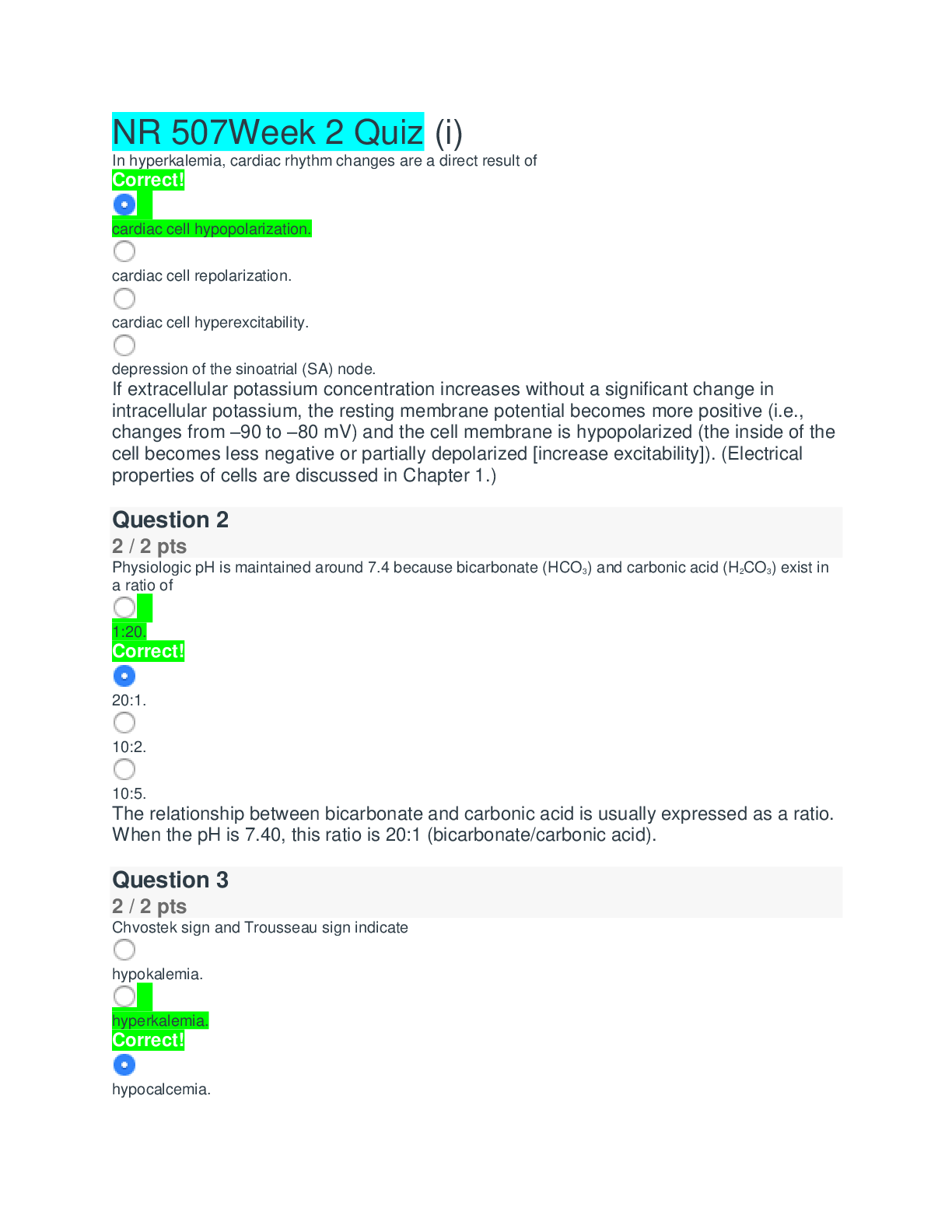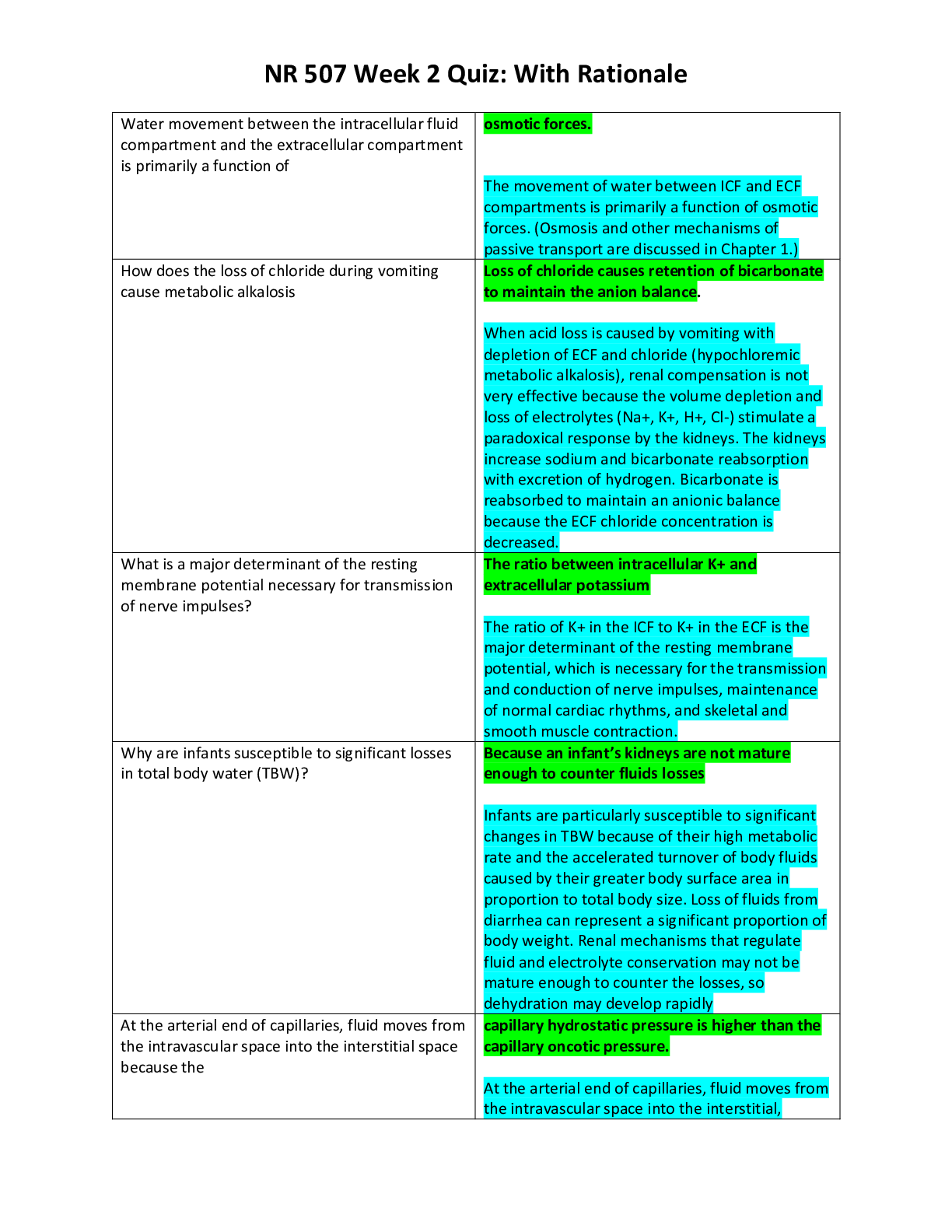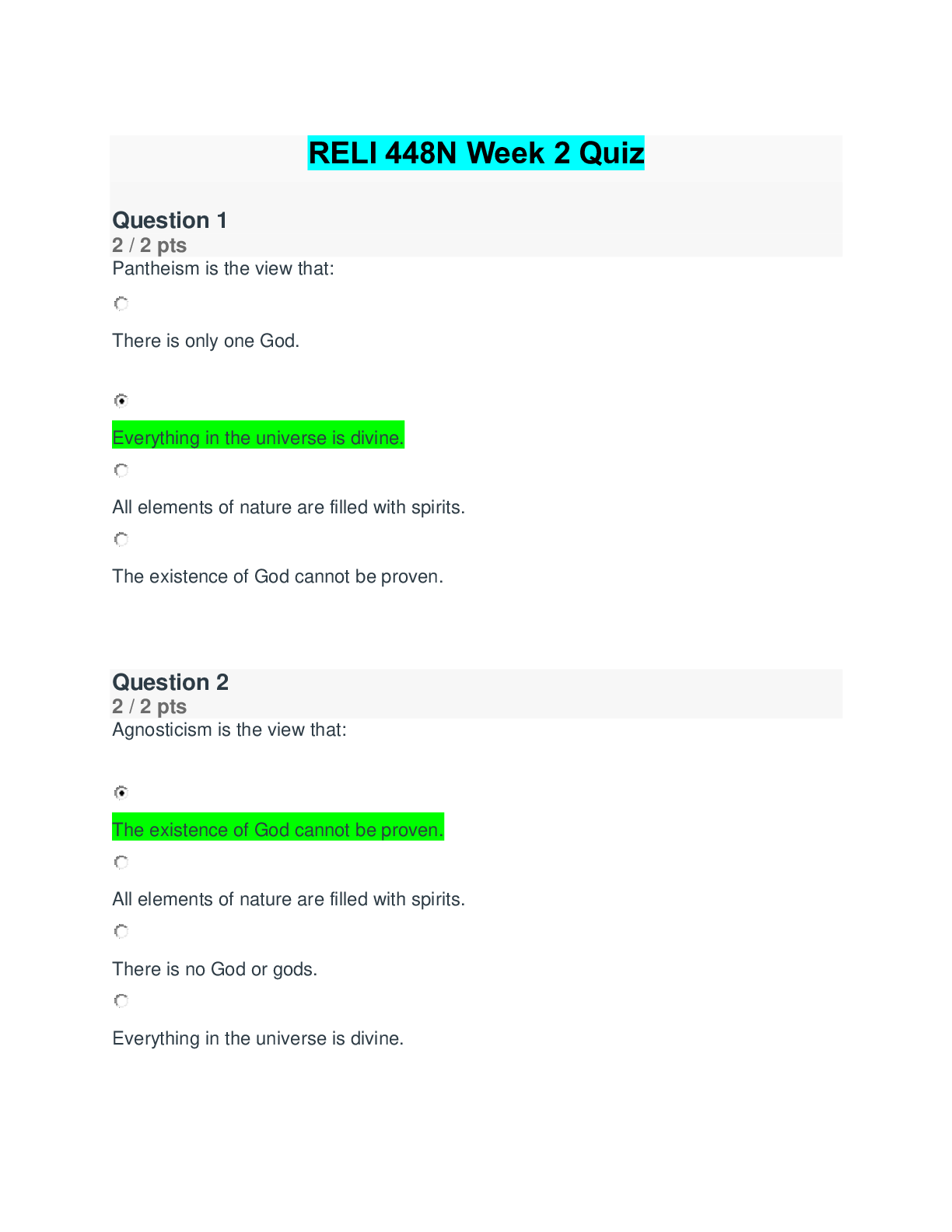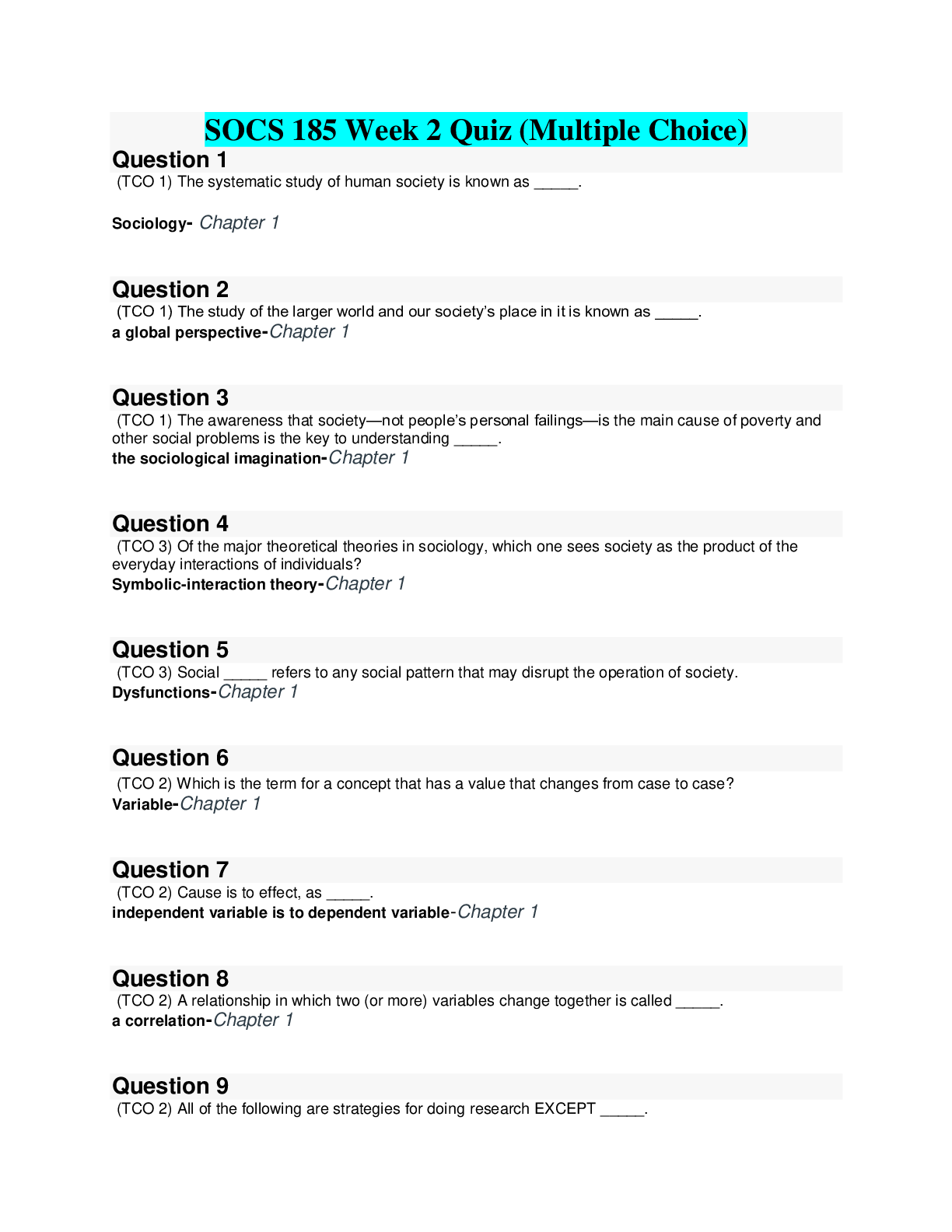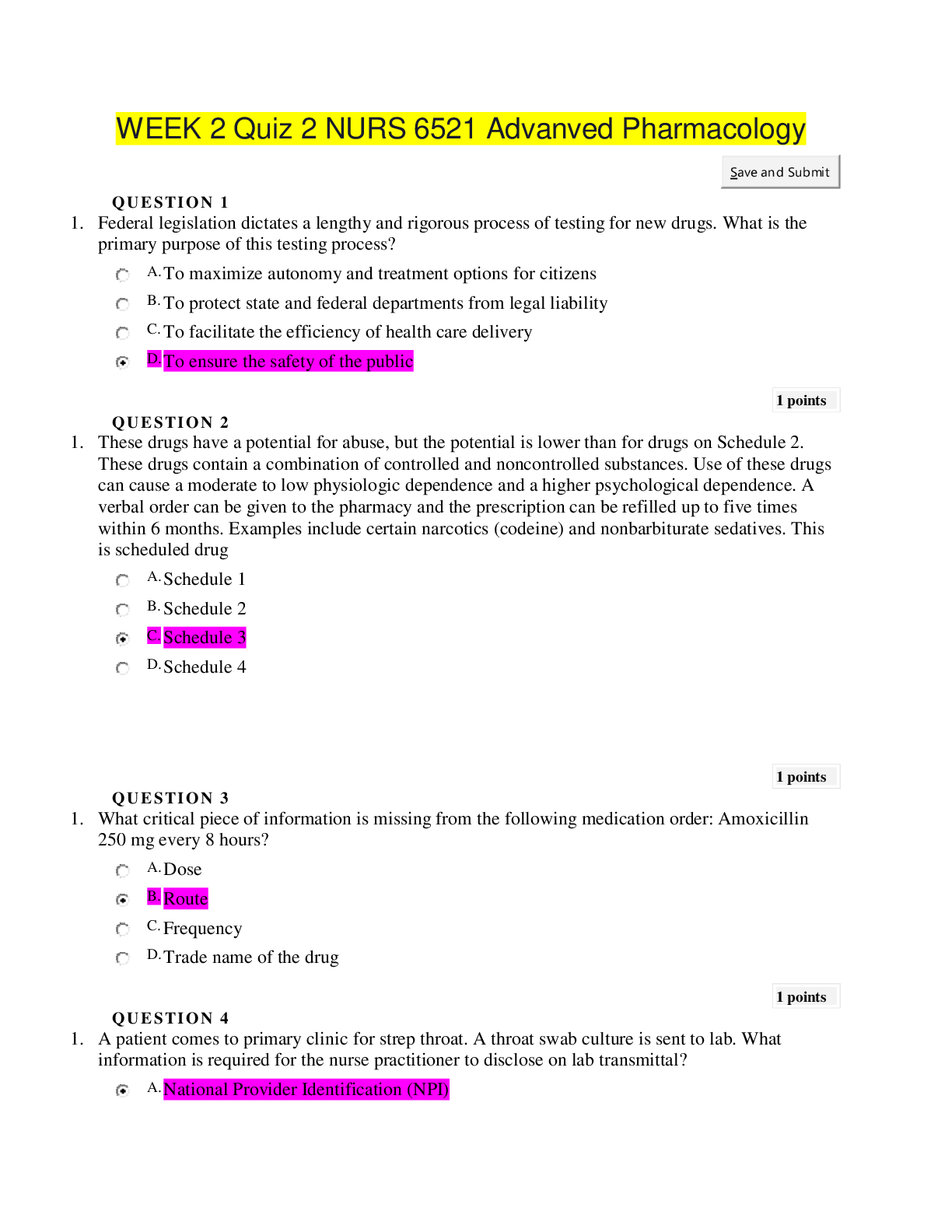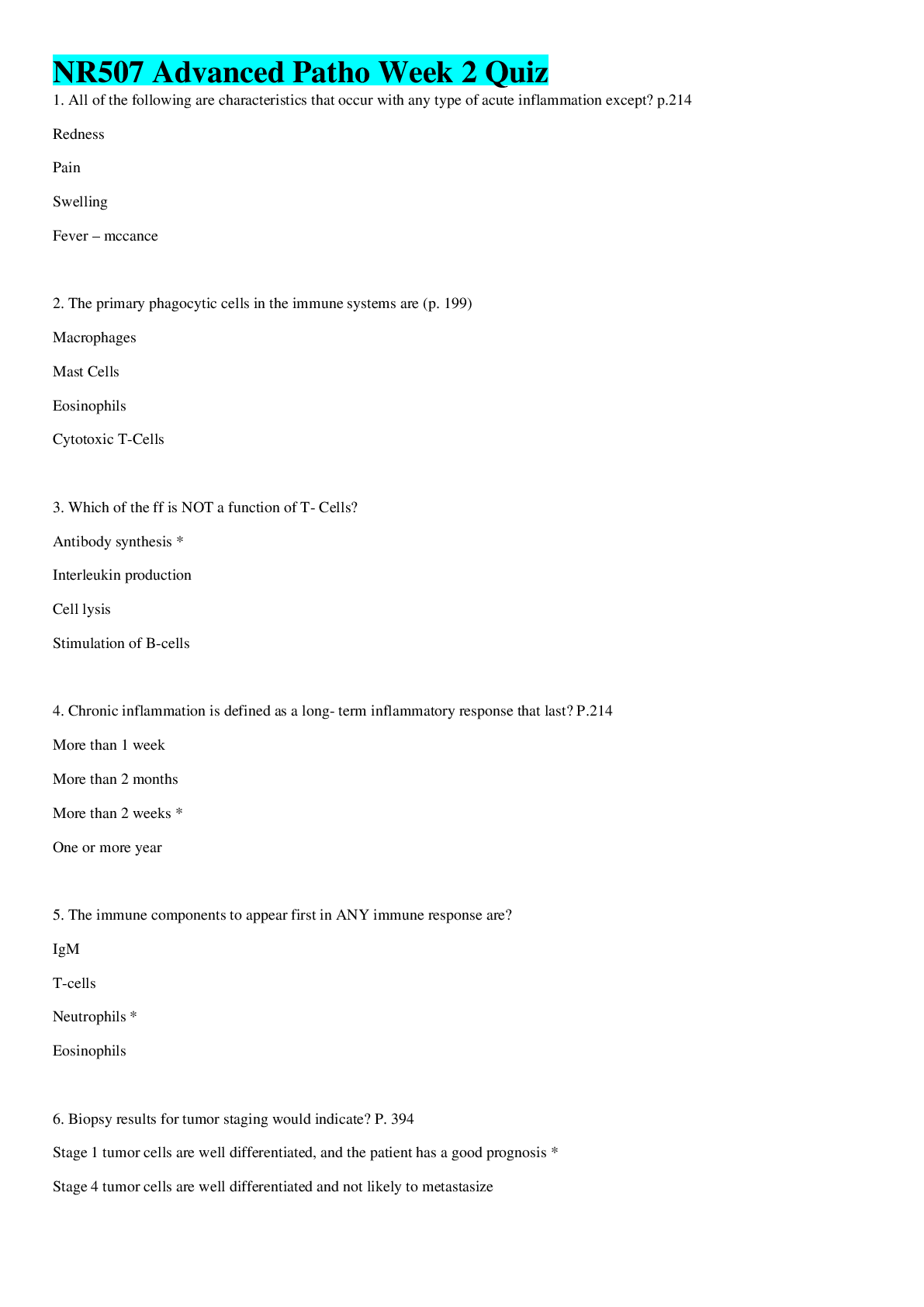Physiology > EXAM > PSYC 3004 Week 2 Quiz – Psychological Disorders Walden University 2020 (All)
PSYC 3004 Week 2 Quiz – Psychological Disorders Walden University 2020
Document Content and Description Below
PSYC-3004-1,Psychological Disorders.2019 Fall Quarter 8/26-11/17-PT3 Review Test Submission: Test - Week 2 Quizzes PSYC 3004 Week 2 Quiz – Psychological Disorders Walden Univer... sity 2020 Question 1 A cluster of symptoms that go together and define a mental disorder is called a Selected Answer: a. syndrome. Correct Answer: a. syndrome. Question 2 Studies of diagnostic conclusions made by clinicians show that Selected Answer: b. they pay too much attention to some information and too little to other information. Correct Answer: b. they pay too much attention to some information and too little to other information. Question 3 3 out of 3 points 3 out of 3 points 3 out of 3 points A client is hooked up to an apparatus that measures galvanic skin response and blood pressure, after which the client verbally answers a series of questions. This is a(n) Selected Answer: b. psychophysiological test. Correct Answer: b. psychophysiological test. Question 4 A person says, “I’m not going to the counseling center; my friends will think I’m mentally ill!” This person’s attitude is Selected Answer: a. common: about one-third of people surveyed expressed a similar opinion. Correct Answer: a. common: about one-third of people surveyed expressed a similar opinion. Question 5 A(n) inventory asks about one’s level of anxiety, depression, or anger. Selected Answer: b. a"ective Correct Answer: b. a"ective Question 6 One limitation of the clinical interview as an assessment tool is that Selected Answer: c. the client may give an overly positive picture. Correct Answer: c. the client may give an overly positive picture. Question 7 The assessment instrument MOST likely to be used to detect subtle brain abnormalities is the Selected Answer: a. neuropsychological test. Correct Answer: a. neuropsychological test. Question 8 Projective tests for personality assessment are designed to Selected Answer: b. learn about unconscious conflicts in the client. Correct Answer: b. learn about unconscious conflicts in the client. Question 9 3 out of 3 points 3 out of 3 points 3 out of 3 points 3 out of 3 points 3 out of 3 points 3 out of 3 points Clients check o" either “Applies” or “Does Not Apply” to a series of 200 items dealing with what they do and what they think in a variety of situations. The kind of test they are taking MOST likely is a Selected Answer: b. personality inventory. Correct Answer: b. personality inventory. Question 10 If a clinician wanted to know more detailed information about a person’s functioning in a specific area, the clinician would use Selected Answer: a. a response inventory. Correct Answer: a. a response inventory. Question 11 3 out of 3 points 3 out of 3 points A clinician having knowledge that a person about to be interviewed has already been diagnosed as having an anxiety disorder could lead to Selected Answer: b. observer bias. Correct Answer: b. observer bias. Question 12 The process of evaluating a person’s progress after being in treatment is called a Selected Answer: b. clinical assessment. Correct Answer: b. clinical assessment. Question 13 Symptoms such as sadness, loss of appetite, and low energy cluster together to form a(n) Selected Answer: c. syndrome. Correct Answer: c. syndrome. Question 14 3 out of 3 points 3 out of 3 points 3 out of 3 points If a clinician is particularly interested in a client’s family background and community influences, MOST likely that clinician’s orientation is Selected Answer: c. sociocultural. Correct Answer: c. sociocultural. Question 15 Use of projective tests has decreased in the past few decades because projective tests often have Selected Answer: b. poor validity. Correct Answer: b. poor validity. Question 16 Another term for developing common standards, or norms, for an assessment tool is Selected Answer: d. standardization. Correct Answer: d. standardization. Question 17 The movement that has tried to find the common factors and strategies that “good” therapists use is called Selected Answer: c. rapprochement. Correct Answer: c. rapprochement. Question 18 3 out of 3 points 3 out of 3 points 3 out of 3 points 3 out of 3 points Mark’s mother is su"ering from depression and needs therapy. Mark tells her, “All therapies are pretty much the same.” Mark is demonstrating which of the following? Selected Answer: a. Uniformity myth Correct Answer: a. Uniformity myth Question 19 3 out of 3 points Which di"erentiates the DSM-5 from earlier versions of the DSM? Selected Answer: d. The DSM-5 requires both dimensional and categorical information. Correct Answer: d. The DSM-5 requires both dimensional and categorical information. Question 20 Compared to projective tests, personality inventories generally have Selected Answer: a. greater reliability and greater validity. Correct Answer: a. greater reliability and greater validity. Friday, September 6, 2019 1:17:29 PM EDT 3 out of 3 points ← OK [Show More]
Last updated: 2 years ago
Preview 1 out of 4 pages
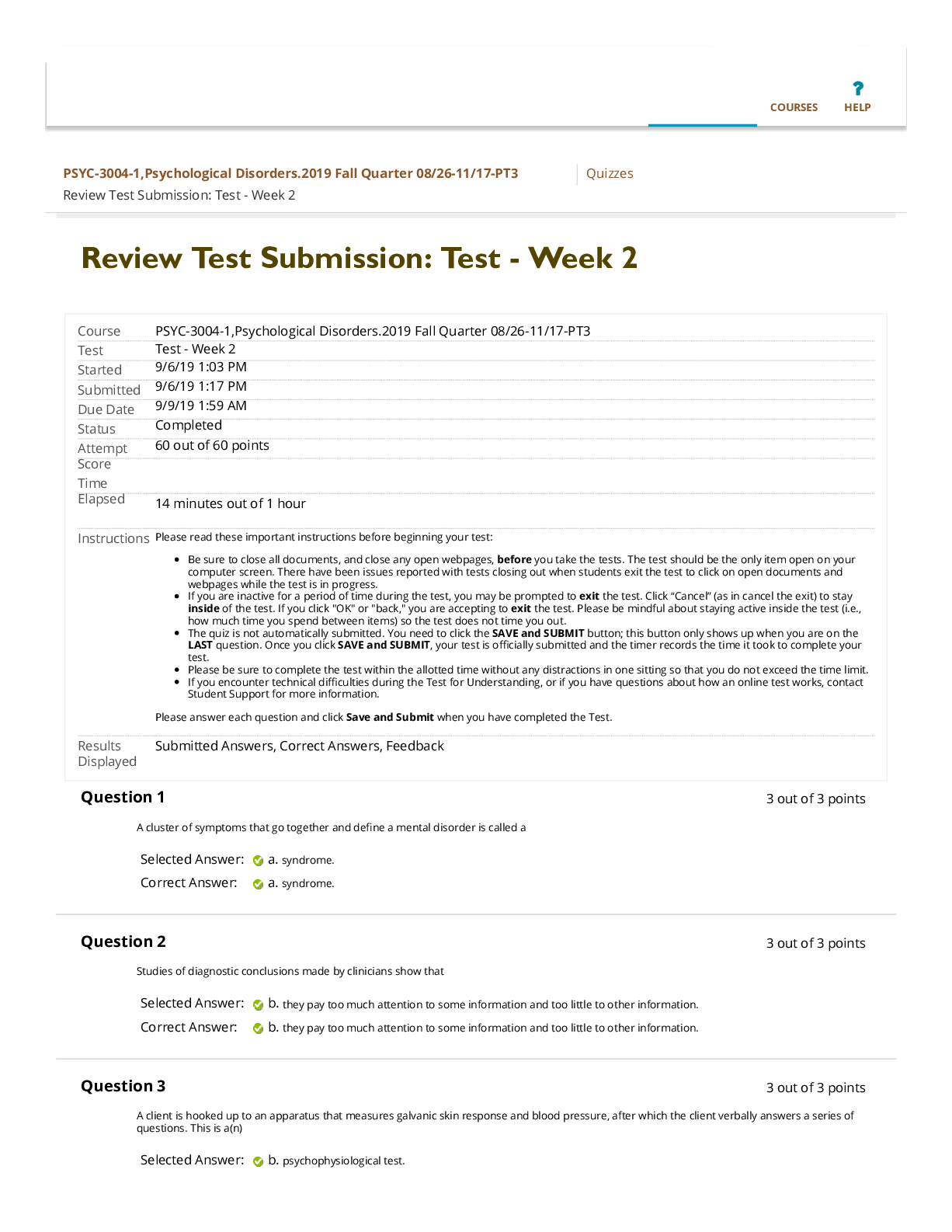
Buy this document to get the full access instantly
Instant Download Access after purchase
Buy NowInstant download
We Accept:

Reviews( 0 )
$15.00
Can't find what you want? Try our AI powered Search
Document information
Connected school, study & course
About the document
Uploaded On
Jul 20, 2020
Number of pages
4
Written in
Additional information
This document has been written for:
Uploaded
Jul 20, 2020
Downloads
0
Views
131

